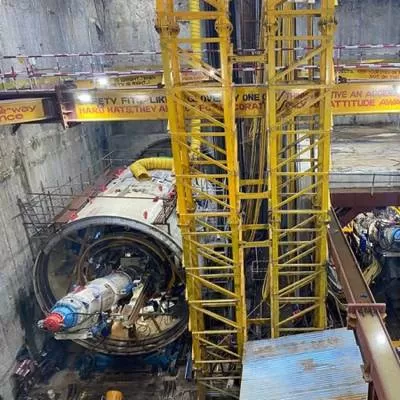

In the Kanpur Metro Rail Project, a 4.10 km (approximately) long underground section from Rawatpur to Double Puliya, located under Corridor-2 between CSA University and Barra-8, is slated for construction. The process of excavating the ground to lower the panel of the first Diaphragm Wall (D-Wall) at the Rawatpur underground station commenced in the presence of senior officials of UPMRC and contracting agencies.
It was mentioned that the pre-construction stage works such as soil testing, barricading, and utility shifting were in progress on the aforementioned section since the tender was awarded in December the previous year. With the commencement of the excavation process for the D-Wall, it was indicated that the construction work for this section had now progressed to the next stage. The stations to be constructed under this section include Rawatpur, Kakadeo, and Double Puliya metro stations. It was emphasised that the Rawatpur underground metro station would serve as a crucial station connecting both corridors of the Kanpur Metro. Passengers would change trains at this station to travel between stations on the first and second corridors.
The D-Wall, described as the boundary of an underground metro station, was explained to be constructed with small rectangular panels, with 65 such panels of different sizes to be used for the D-Wall in Rawatpur Metro Station.
It was further explained that the underground stations of Kanpur Metro Corridor-2 would be built using the 'Top-Down Method', meaning that construction works for these stations would progress from top to bottom. Initially, the roof slab would be prepared, followed by the construction of concourse platform levels.
The adoption of this method was justified as a means to minimize the impact on traffic, as barricading on roads would be reduced after the construction of the first floor underground. It was assured that construction work below ground would continue while allowing the smooth movement of vehicles on the road. This method was stated to be similarly employed in the construction of both underground sections of Corridor-1.